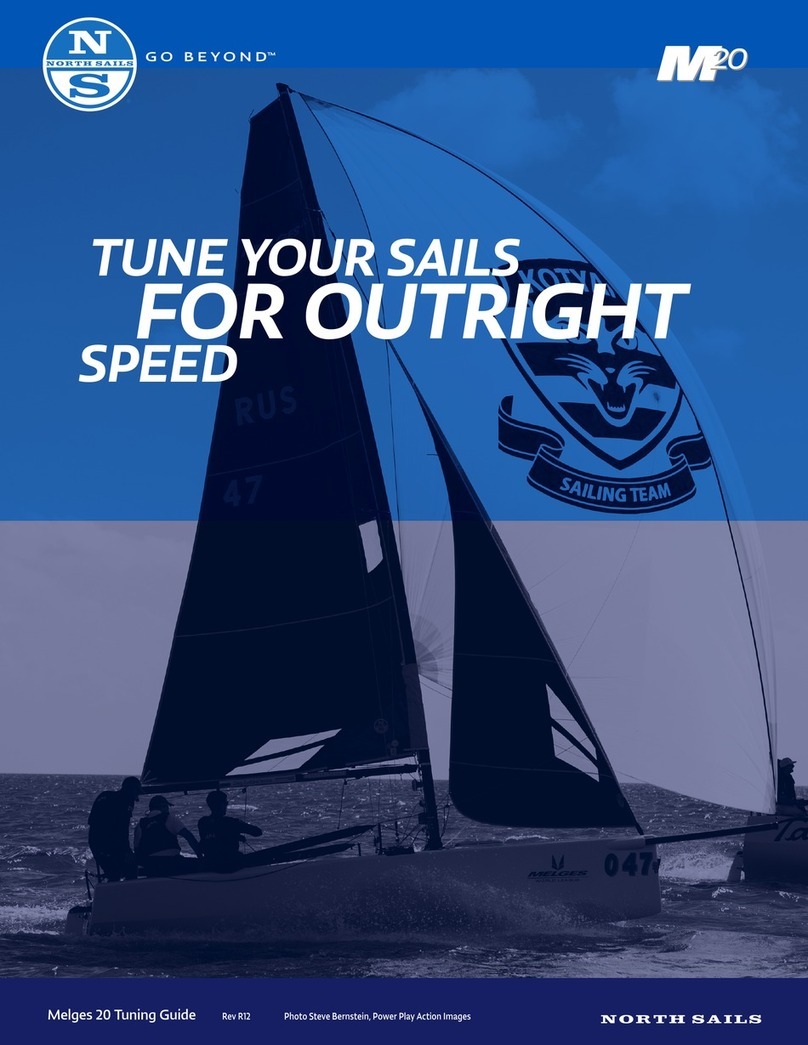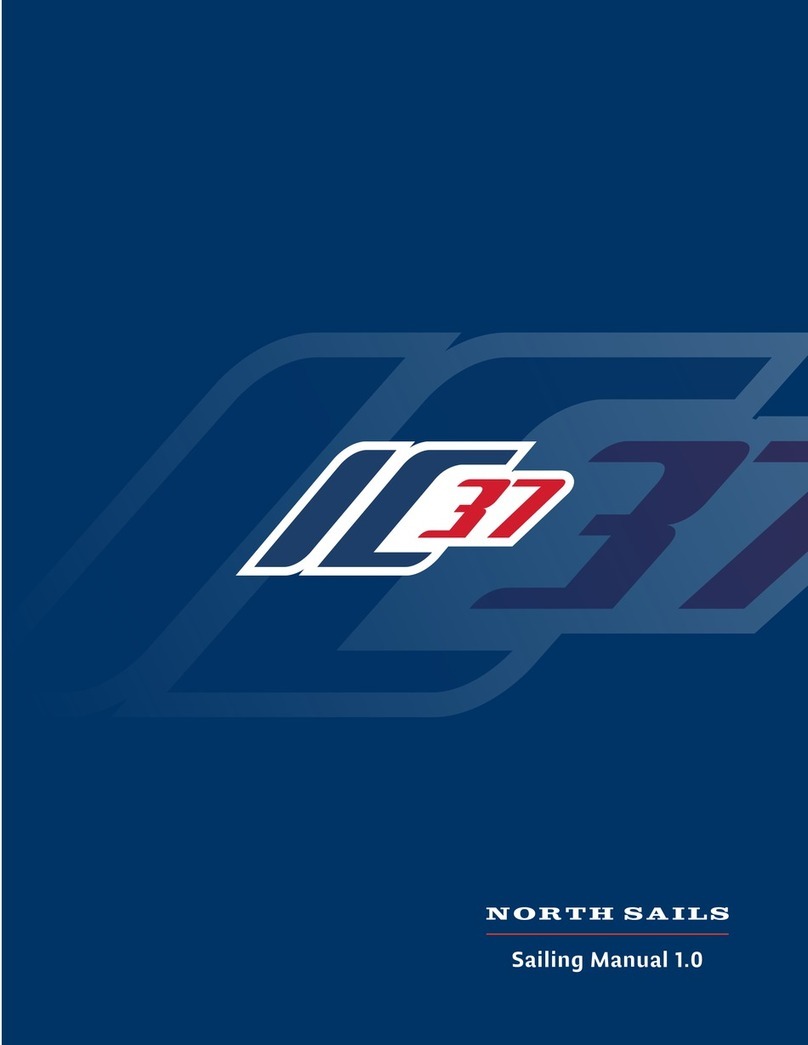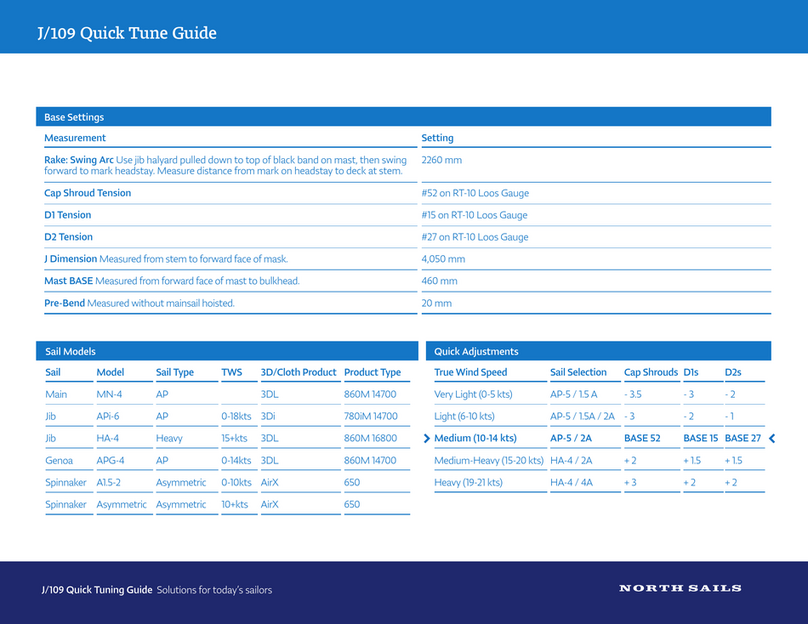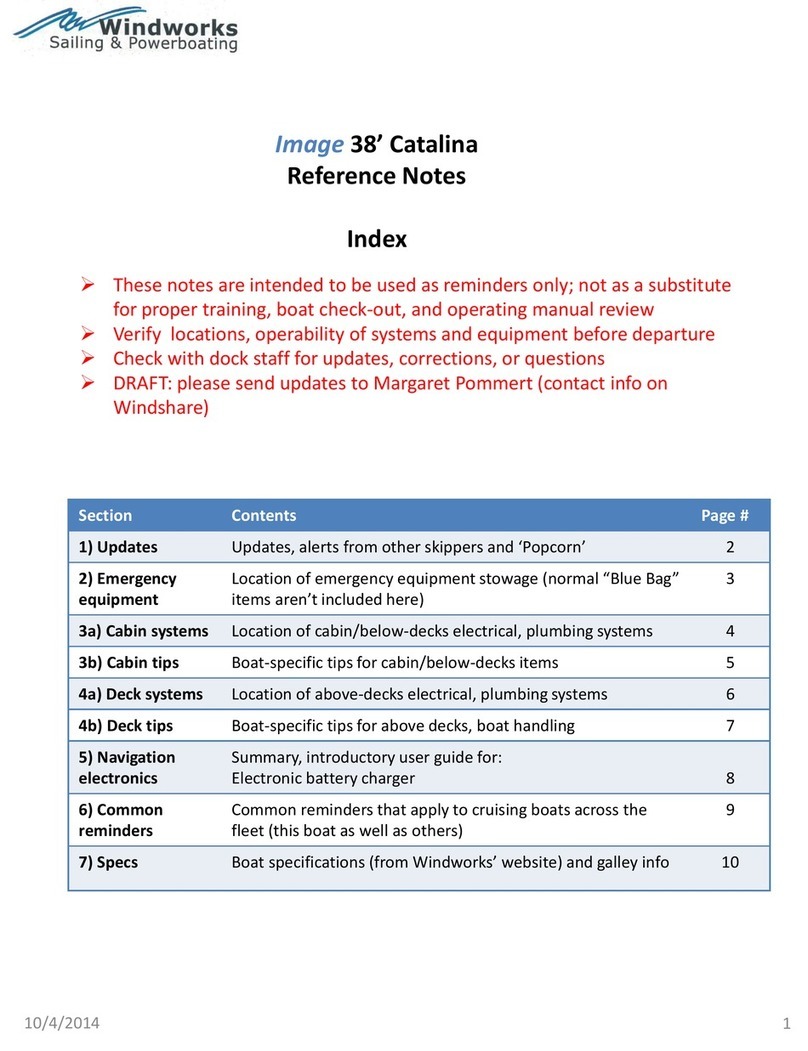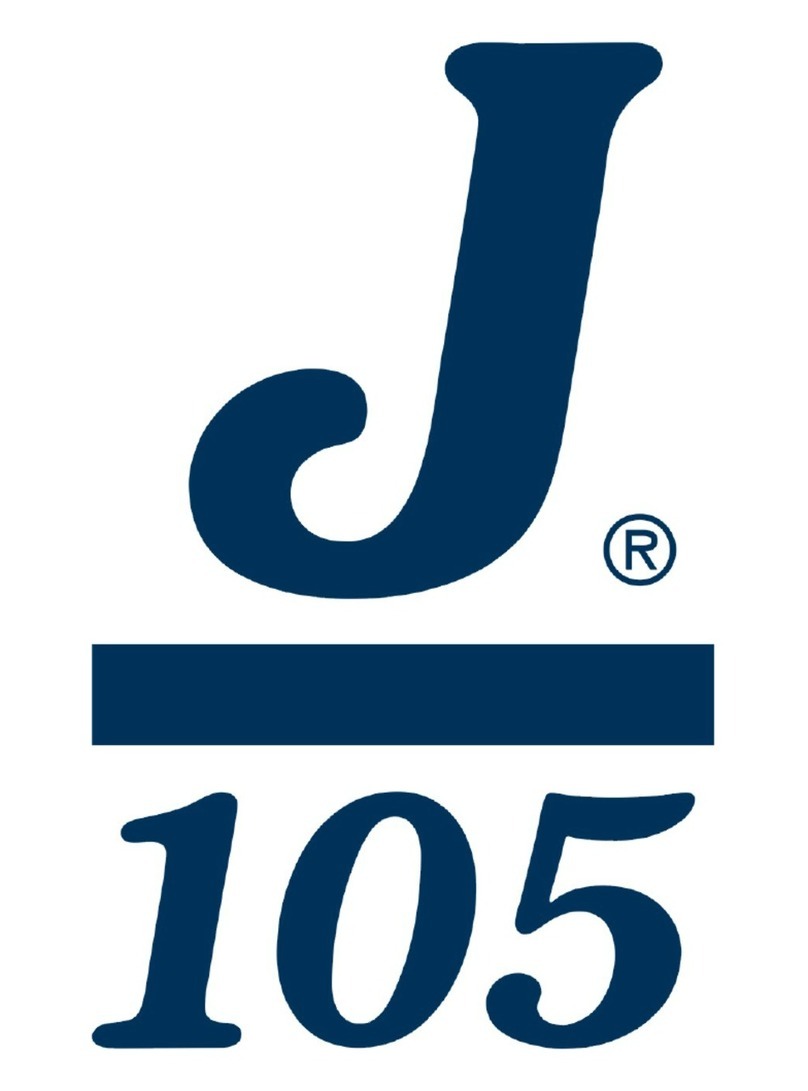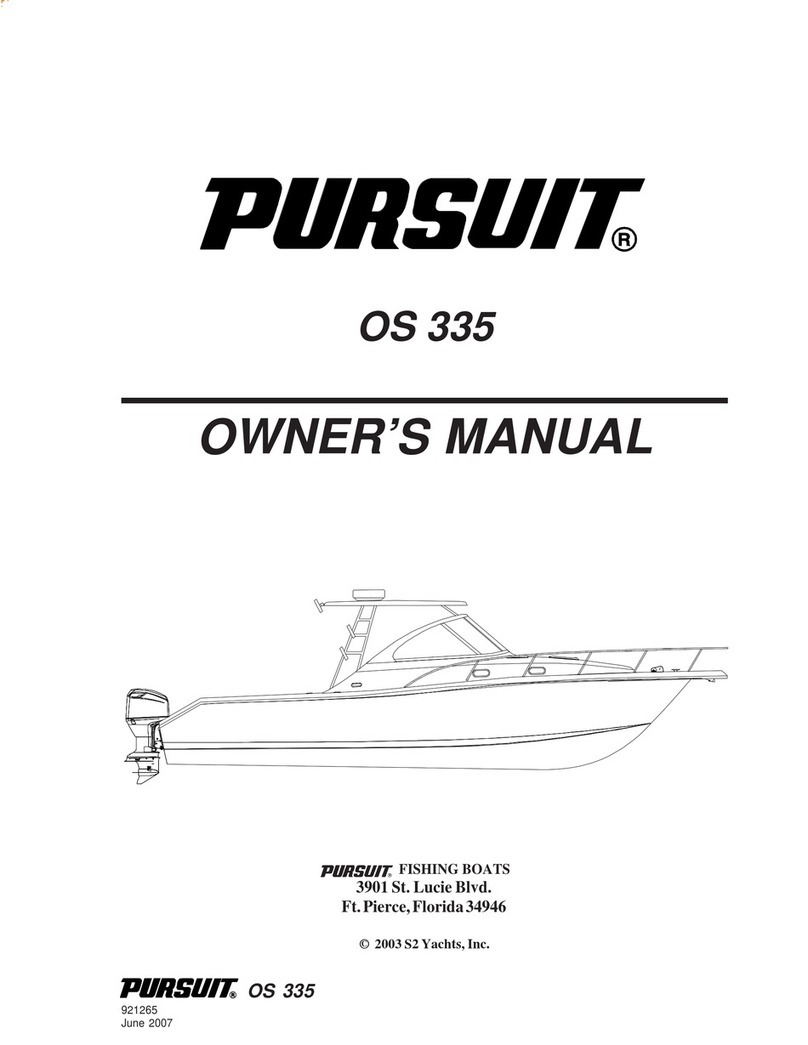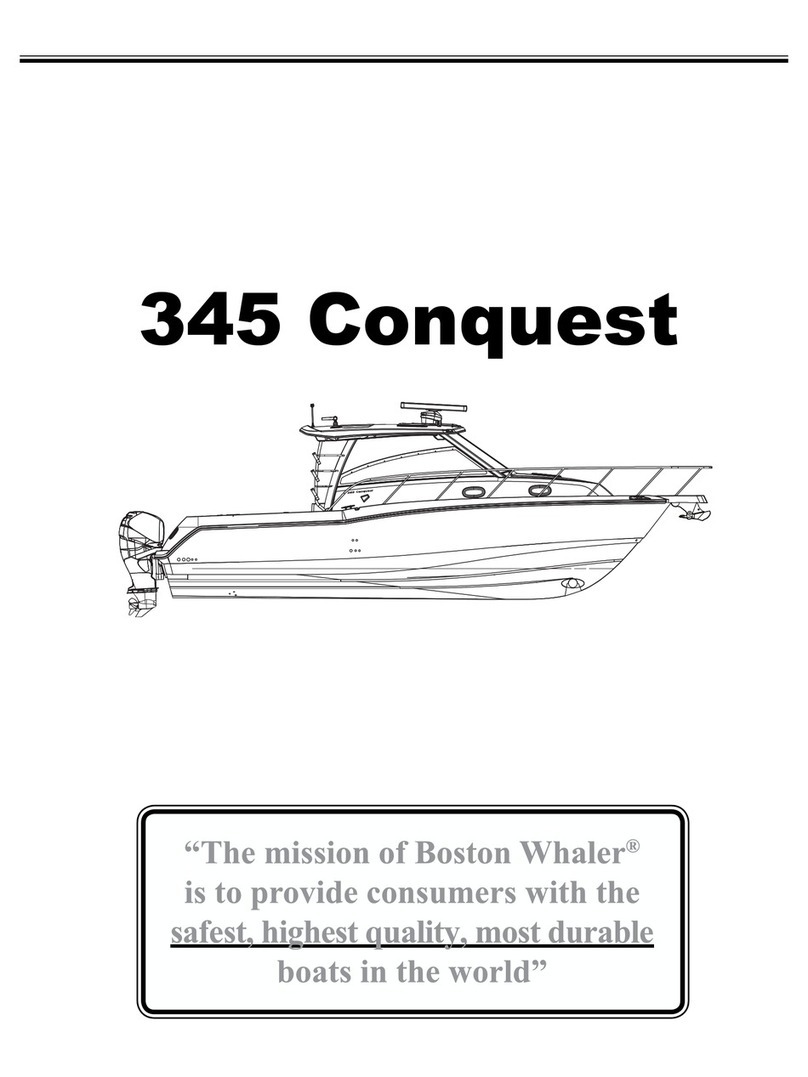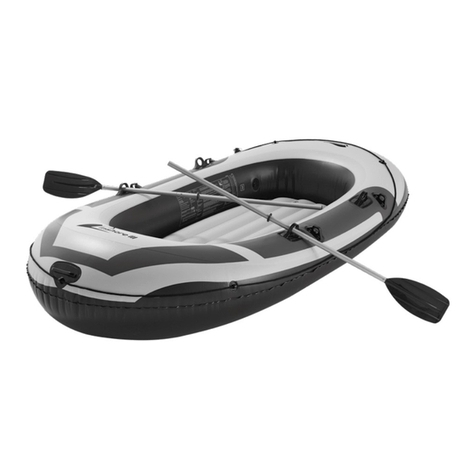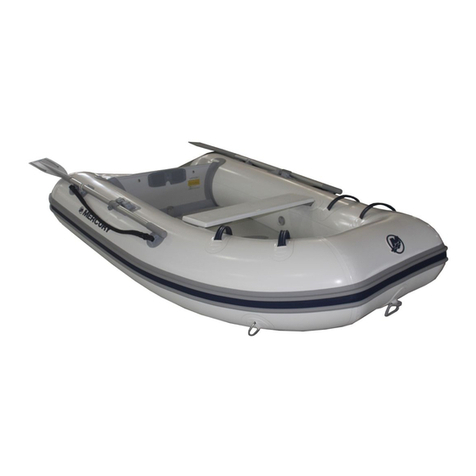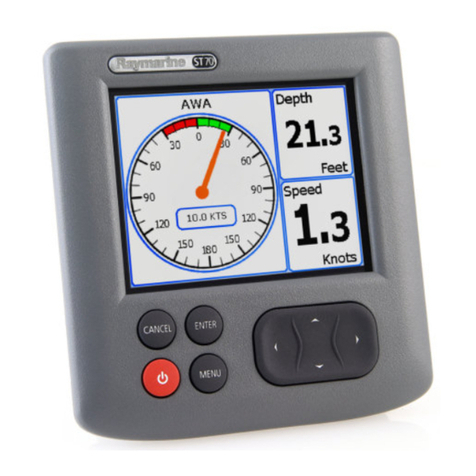NORTH SAILS J-105 Quick start guide


Introduction
The J-105 began what J-Boats describes as the “J/Sprit revolution”. It was the first boat of this kind
introduced and has been followed by many models. The class has enjoyed great growth in recent years
through the quality of the boat itself and the strong involvement of its’ owners. Its attraction as a one-
design race boat is its high performance, strict class rules and limited sail inventory that promotes
extremely tight class racing.
The J-105 Class is part of North Sails Class Development Program. The “CDP” is designed to harness and
deliver to our Offshore One-Design customers the best sail designs and tuning methods that exist within
North Sails globally. We have begun by focusing on the Farr 40, Mumm 30, One-Design 35, J/120, J/105
and Farr 395 classes and plan to expand the Class Development Program to other Offshore One-Design
classes as we move forward.
“Through the Class Development Program, North Sails is coordinating sail development and rig tuning
like never before,” said North Sails Vice President Ken Read, who is the Director of the CDP. “Dedicated
class experts are consulting with our Offshore One Design customers on a regular basis and are
distributing the latest rig setups and trim techniques to North Sails lofts worldwide. Offshore One Design
sailors can go to any North loft worldwide for sails and tuning advice that is on par with the best in the
class.
The three sail inventory creates a challenge for sailmakers to produce fast sails that can perform well
throughout the complete range of wind conditions. North has put forth great effort to produce the
fastest, most versatile, easiest to use sails. Our constantly updated tuning guide provides “turn key
speed” for our clients. With the advent of North’s Offshore One-Design Class Development Program,
our J-105 program has seen significant developments over recent months. Class Leaders Tim Dawson
and Will Keyworth, with the help of several other North employees, have worked to further refine our
products through our class involvement and two boat sail testing sessions.
At North, we look at each sail with from a unique perspective and choose the best construction process
that we are able to produce within the class rules. We choose the best fabrics and construction
techniques that are commercially available, or develop our own through North Cloth where the proper
fabrics are unavailable.
This tuning guide has been developed over years of J-105 sailing and sail development. It is intended to
serve as a starting point for new boat owners and new North Sails clients. Once your boat is set up to
the basic principles of this tuning guide, you can use our Quick Tuning Guide to make on-the-water
adjustments to your rig to make adjustments for various wind conditions. This guide is not an absolute
truth, but will put you in the ballpark. As you get more advanced, you may find that slight alterations
better suit your sailing style.
Feel free to contact Class Leaders Tim Dawson or Will Keyworth if you have any
questions or comments about the information in this guide, or if there is any other
way that we can help make your J-105 sailing more enjoyable.
2

Contents
Part 1 — Rigging Preparation
Part 2 — Rig Set — Up
Part 3 — Mainsail Trim
Part 4 — Jib Trim
Part 5 — Crew Weight Placement
Part 6 — Downwind Sailing
Quick Tuning Guide
3

Part 1 — Rigging Preparation
The following recommendations are small changes that should be made to the stock J-105 to allow you
to get the most from your North Sails and make the boat easier to sail and set up.
Head swivel shackle: The North Sails jibs come with a webbing loop at the head. It is critical to have a
90-degree “twist” shackle to attach the sail to the swivel. A standard shackle will cause a hard spot at
the top of the jib as the sail is torqued.
Remove backstay toggle: Many J-105s come with a toggle that rotates the hydraulic cylinder 90-
degrees so that the handle faces forward. While it is nice to have the handle forward, this toggle
reduces the throw of the backstay adjuster too much so that you are not able to get enough tension in
heavy air. Some of the older boats actually need to have the backstay rod shortened to get enough
backstay throw.
Change to 6:1 Cunningham: The standard Cunningham is 2:1 and led aft to a cabinhouse halyard
stopper. This system should be replaced with a 6:1 system with the lower purchase with integral cleating
shackled to the ring on the top of the Quik Vang. This allows for easier and more precise Cunningham
control by a forward crewmember. Many boats then rig the asymmetrical tack line through the free
stopper. The tack line is much easier to work with in this placement than on the side of the cabinhouse.
Mark the tack line at the cleat: Put marks on the tack line at the proper range of settings. As you
approach the windward mark you can then pre-set the tack line so that when you extend the pole and
set the spinnaker the tack will be set properly.
Move mainsheet swivel base forward of the traveler: This allows for easier trim of the gross tune
by the main trimmer, especially when tacking.
Tapered SpectraTM spinnaker sheets: These sheets have a light uncovered portion that attaches to the
sail, with a covered portion that goes on the winch. The sheets should be 3/8” Spectra cored line with
the cover removed at the sail end of the sheet. These lightweight sheets are used in all conditions and
help downwind performance in light air. Heavy sheets pull down on the leech of the spinnaker in light
air, closing the leech too much.
Bypass the jib sheet turning block: The standard set-up for the jib sheet is to run the sheet from the
clew of the jib, through the lead block, through the turning block near the rail, and then to the winch.
This set-up makes the lead block lean over to leeward, increasing sheeting angle. In light and moderate
air, the jib will sheet tighter to the centerline if you lead the sheet straight to the winch from the jib lead
block. In heavy air, it can be faster to use the turning block to sheet the jib outboard slightly.
4

Part 2 — Rig Set-Up and Preparation
Tools and items required: Loos RT 10M Rod Tension Gauge, 2 crescent wrenches, spray lubricant,
bosun’s chair and 50’ metric tape measure.
Part of the success of growth of the J-105 Class is the tight class rules and limited sail inventory. With
the J-105s limited sail inventory of only one headsail, aggressive rig tuning is essential for performance
throughout the full range of wind conditions. By definition, the North Sails “AP” inventory is optimized
for 9 to 12 knots. This is actually the easiest condition to sail in, so the racing tends to be at its tightest.
Having really fast sails in this condition is key to gain a slight speed edge and the AP inventory is
designed to give you just that. The heavy air “HA” inventory is optimized for 13-20 knots. In the
extreme conditions of light and heavy air the rig must be manipulated to enhance the sail shapes for
those conditions. The result of proper rig tuning is the correct relationship between mast bend and
headstay tension to get fast shapes. The North inventory has been designed to make these transitions
easily with the correct tuning to be fast in all conditions.
Step 1 — Check Mast Butt Position: The measurement from the front of the forward bulkhead to the aft
face of the mast should be 24.46cm (9 5/8”). This is very close to the center of the step. For the HA
sails, the mast butt should be 26.00cm from the bulkhead.
Step 2 - Check J Measurement: The J measurement is the distance from the headstay intersection to the
deck to the forward face of the mast. This should be 4.11m (13’6”). Use mast chocks or SparTite to
achieve this position.
Step 3 — Set Mast Rake: Rake is controlled by headstay length. The headstay should be set at the class
legal maximum rake, 13.035m. Hoist a crewmember up the mast and have them hold the butt of the
tape measure at the center of the pin that secures the forestay to the mast. Measure to the to of the
furler drum (measurement A), then measure from the top of the furler drum to the bottom of the furler
drum (measurement B), then from the underside of the furler drum to the intersection of the stem and
sheer line of the boat (measurement C). The overall headstay measurement is then the sum of A+B+C.
5
Table of contents
Other NORTH SAILS Boat manuals
Popular Boat manuals by other brands

Jeanneau
Jeanneau SUN ODYSSEY 41 DS owner's manual
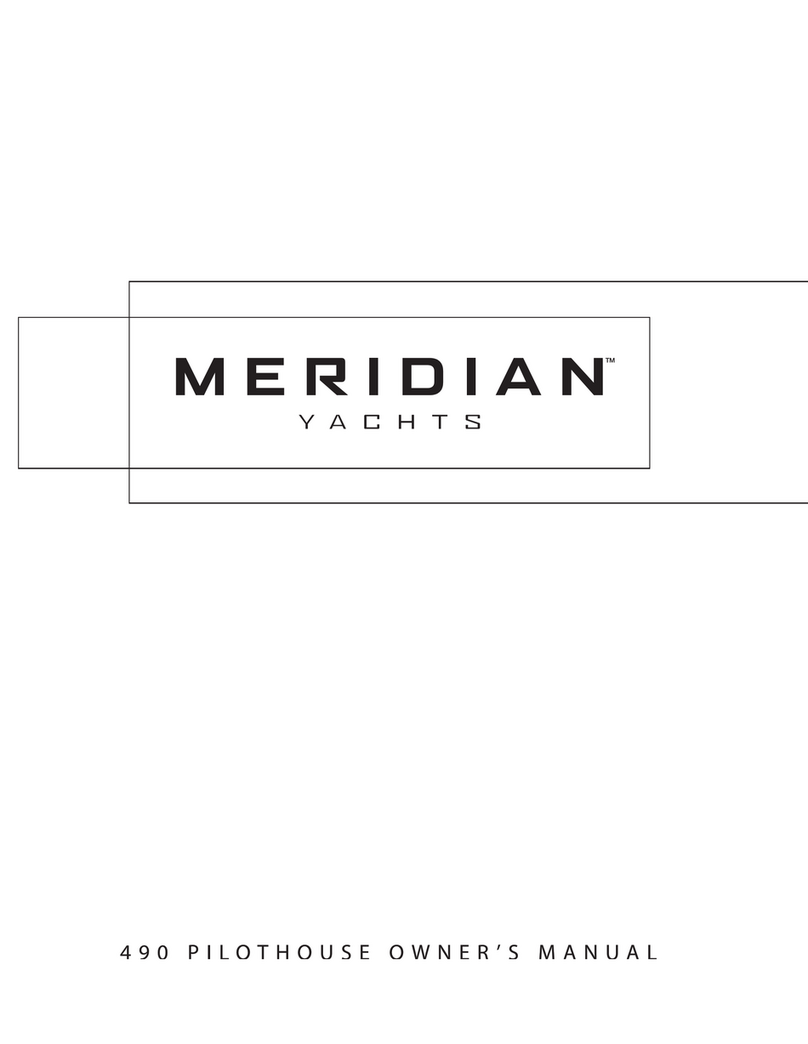
Meridian
Meridian 490 Pilothouse owner's manual
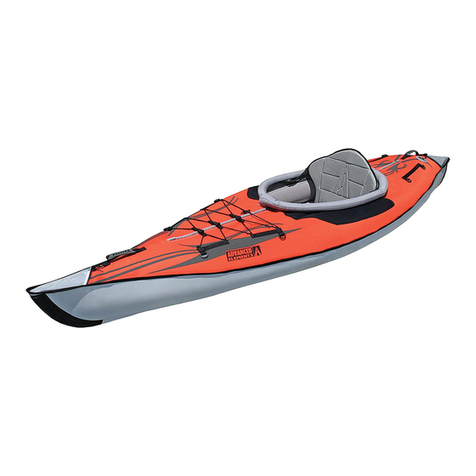
Advanced Elements
Advanced Elements AdvancedFrame Expedition AE1009 owner's manual
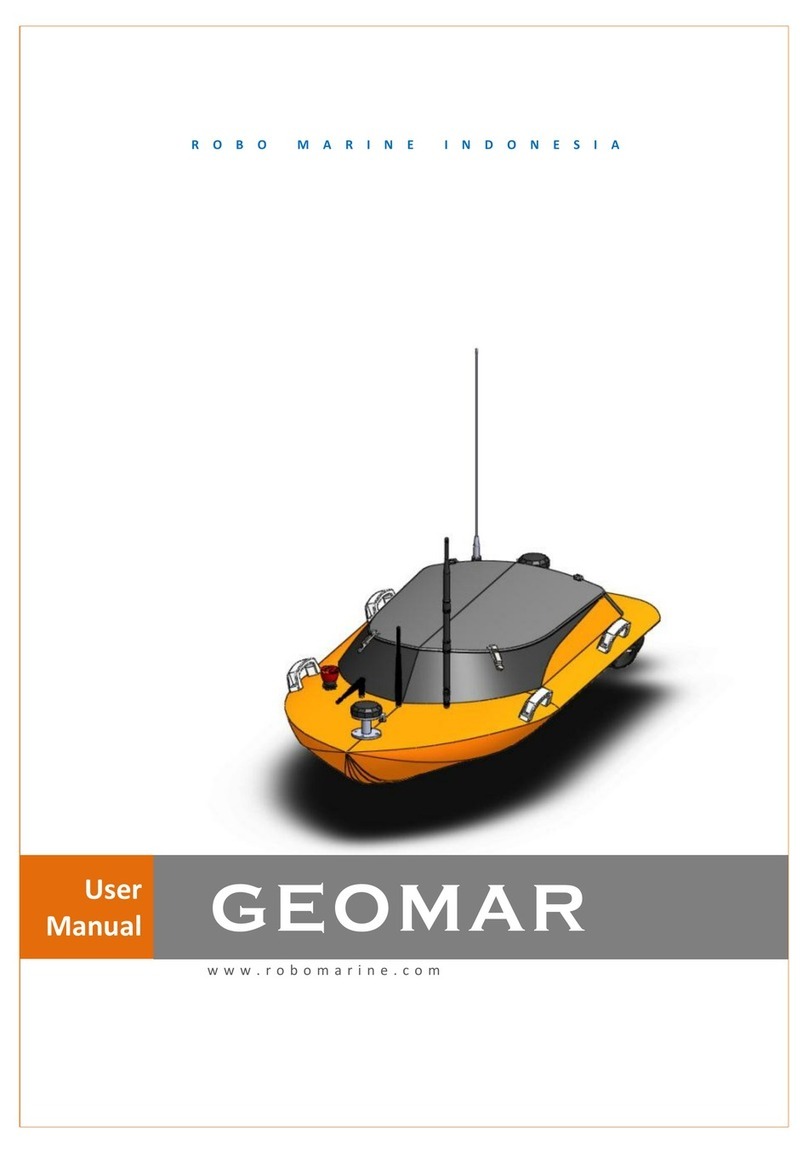
Robo Marine Indonesia
Robo Marine Indonesia GEOMAR user manual
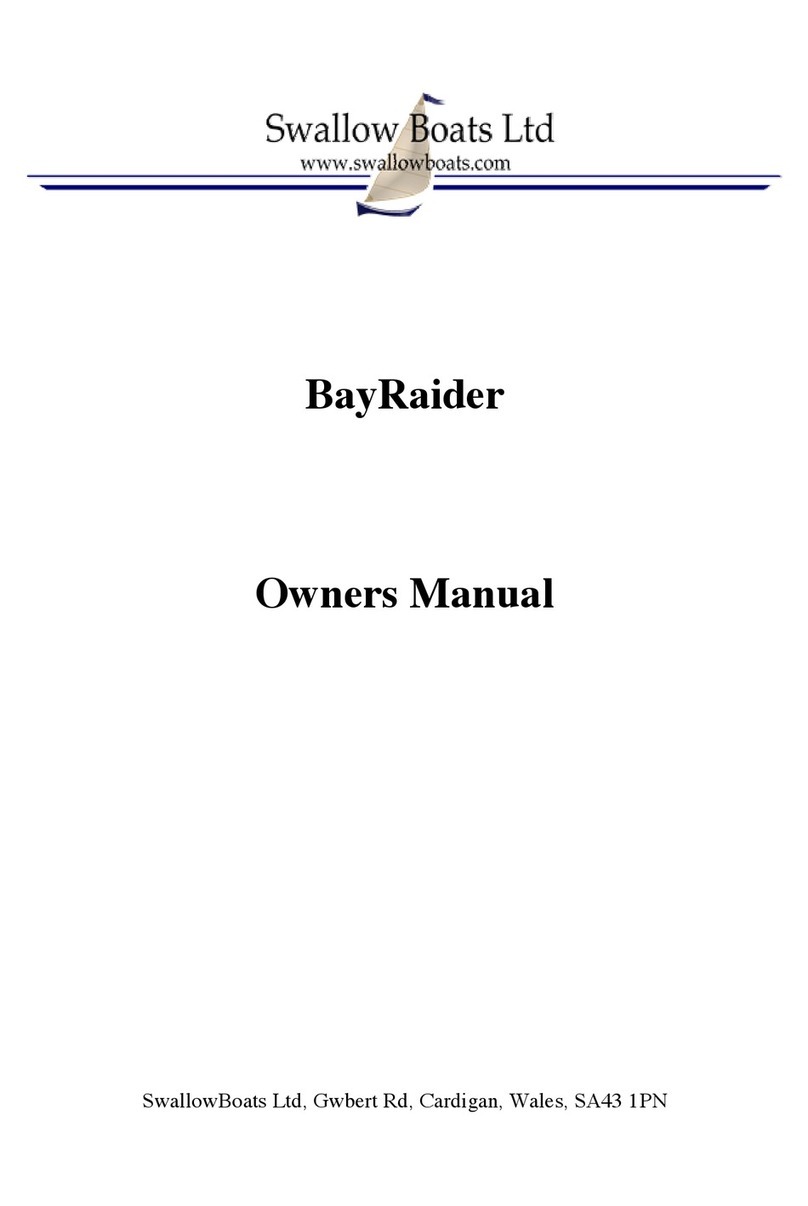
Swallow Boats
Swallow Boats BayRaider owner's manual
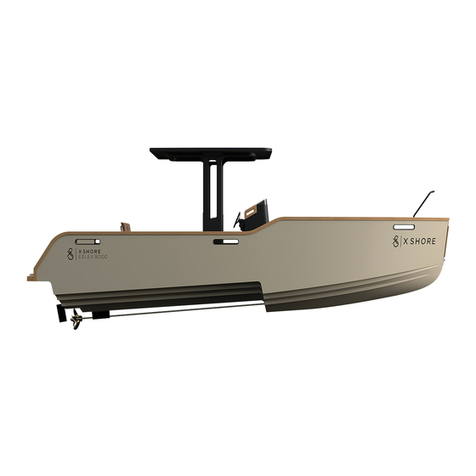
X SHORE
X SHORE EELEX 8000 owner's manual

